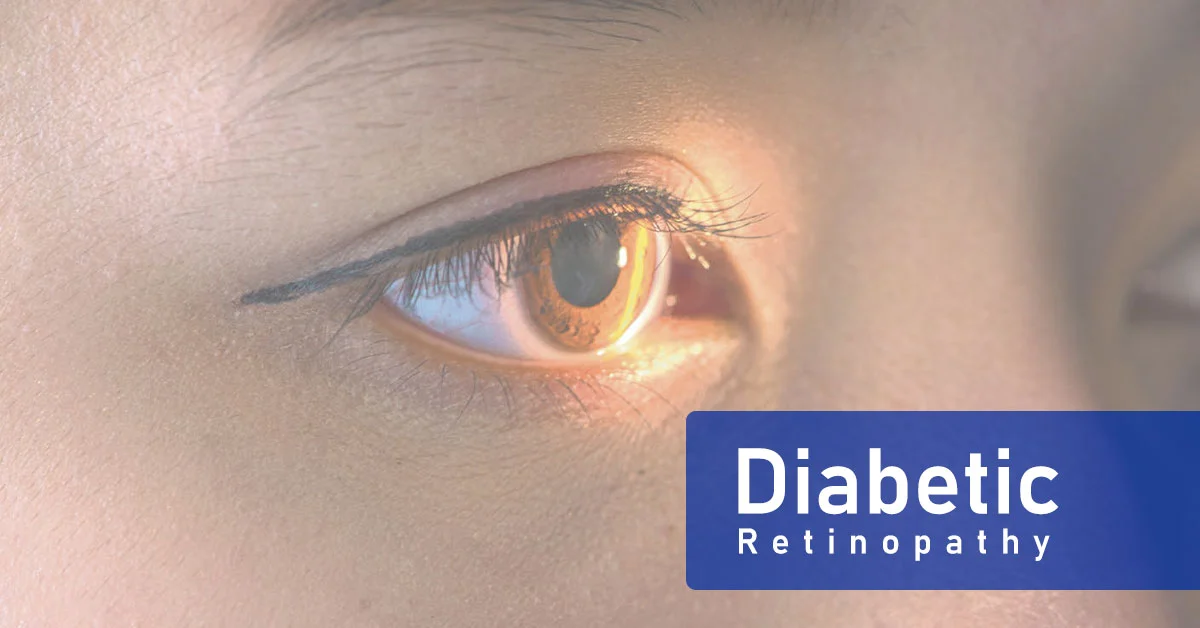Glaucoma definition
Glaucoma affects over 3 million people in the United States, and this number is projected to be 4.3 million by 2030 as the USA population ages. Glaucoma cost $6.1 billion in 2014 to the USA healthcare system, and it is projected to be $12 billion in 2032
Glaucoma definition
Glaucoma is a common eye condition where the optic nerve, which connects the eye to the brain, becomes damaged. It's usually caused by fluid building up in the front part of the eye, which increases pressure inside the eye. Glaucoma can lead to loss of vision if it's not diagnosed and treated early.
National Eye Institute (NEI) report showed that half of diabetic patients do not visit ophthalmologists for diabetic retinopathy (DR) screening even though their primary care physicians (PCPs) refer them.
This scenario is the same for other eye disease referrals for screening, including glaucoma. NEI recommends glaucoma screening from the age of 40.
However, this is not implemented effectively due to patients’ awareness and non-compliance. Therefore, the number of blindness due to glaucoma and related blindness is increasing every year, and thus, it is an urgent need to identify individuals at the early stage of this disease in the primary care settings through automated screening for the implementation of preventative strategies.
Glaucoma types
Although there are many types of glaucoma,ophthalmologists typically group them into two main categories: open-angle glaucoma and angle-closure glaucoma.
There are four major types of glaucoma:
- o
- Open-angle glaucoma.
- o
- Angle-closure glaucoma, also called closed-angle glaucoma.
- o
- Congenital glaucoma.
- o
- Secondary glaucoma.
- o
- Open-Angle Glaucoma
Open-angle glaucoma is the most common type of glaucoma, but there are different forms. In all forms of open-angle glaucoma, there is something wrong with the drainage angle of the eye even though it appears to be open and appears normal in microscopic exams. The drainage angle is where the iris (the colored part of your eye) meets a tissue called the trabecular meshwork.
- o
- Primary Open-Angle Glaucoma
In primary open-angle glaucoma, the drainage angle of the eye is open but does not allow fluid, called aqueous humor, to drain adequately. This results in the eye’s drainage system becoming clogged over time, leading to a slow increase in intraocular pressure. This type of glaucoma is painless and often goes unnoticed until damage to the optic nerve becomes more severe with some people losing their vision before they are aware there is a problem. Primary open-angle glaucoma can run in families and is more common in African Americans.
- o
- Low-Pressure Glaucoma
Also called normal-tension glaucoma, low-pressure glaucoma is characterized by damage to the optic nerve and vision loss despite intraocular pressure not being elevated above average level. Low-pressure glaucoma is also known to result from poor blood flow to the optic nerve and is associated with a variety of conditions including migraines, Raynaud’s disease, and sleep apnea.
- o
- Congenital Glaucoma
Congenital glaucoma is a form of the disease that occurs in infants and very young children due to abnormal development of the drainage angle of the eye. Symptoms of congenital glaucoma often include light sensitivity, watery eyes, or a tendency to keep the eyes closed. The eyes may also appear larger than normal and have cloudy corneas.
Glaucoma treatment
There is no cure (yet) for glaucoma, but if it's caught early, you can preserve your vision and prevent vision loss. Taking action to preserve your vision health is key. Glaucoma is treated by lowering intraocular pressure. Treatment options include prescription eye drops, oral medicines, laser treatment, surgery or a combination of approaches can glaucoma be cured.
Symptoms of glaucoma
Glaucoma does not usually cause any symptoms to begin with. It tends to develop slowly over many years and affects the edges of your vision (peripheral vision) first
glaucoma causes
Glaucoma symptoms and treatment
Symptoms of glaucoma : Most cases of glaucoma have few or no early symptoms, and therefore, about half of Americans with glaucoma don't know they have it. When symptoms arise, it is already late, i.e., irreversible visual field loss. But some time it’s show this symptoms:
- o
- intense eye pain.
- o
- nausea and vomiting.
- o
- a red eye.
- o
- a headache.
- o
- tenderness around the eyes.
- o
- seeing rings around lights.
- o
- blurred vision.
The Problem to be Solved: Glaucoma (Fig. 1) affects over 3 million people in the United States, and this number is projected to be 4.3 million by 2030 [1] as the USA population ages. Glaucoma cost $6.1 billion in 2014 to the USA healthcare system, and it is projected to be $12 billion in 2032 [2]. Most cases of glaucoma have few or no early symptoms, and therefore, about half of Americans with glaucoma don't know they have it [3],[4]. When symptoms arise, it is already late, i.e., irreversible visual field loss [5]. National Eye Institute (NEI) report showed that half of diabetic patients do not visit ophthalmologists for diabetic retinopathy (DR) screening even though their primary care physicians (PCPs) refer them [6]. This scenario is the same for other eye disease referrals for screening, including glaucoma. NEI recommends glaucoma screening from the age of 40 [7],[8]. However, this is not implemented effectively due to patients’ awareness and non-compliance. Therefore, the number of blindness due to glaucoma and related blindness is increasing every year, and thus, it is an urgent need to identify individuals at the early stage of this disease in the primary care settings through automated screening for the implementation of preventative strategies.
To the best of our knowledge, few, if any, such screening systems exist:
- o
- Although a number of publications on glaucoma detection and glaucoma suspect screening approach [9],[10],[11],[12],[13, 14],[15],[16],[17],[18] and patents [19],[20],[21],[22],[23],[24],[25] exist, few automatic techniques exist which can effectively identify an individual with glaucoma in the primary care/clinical settings.
- o
- published models lack validation against large datasets, no external validation against different/diverse datasets, and no validation following against the prospective data taken from clinical settings through pivotal trials.
Product to be Developed and Our Progress: Motivated by this need for early glaucoma detection, we will develop an automated glaucoma detection system to screen individuals with glaucoma in primary care that will use retinal color imaging, socio-demographic parameters, and other conventional risk factors. Our customer segment determination study (funded by NIH I-Corp) of 117 physicians and decision-makers found that the primary care physicians (PCPs) preferred to have such a tool for patient management and better acceptance of the referral system. Therefore, we will focus on developing and clinical deployment of such a tool. So far, we have successfully developed and tested the software prototypes using color retinal images and machine learning (ML) techniques on various multi-ethnic datasets. We performed an external validation on the ORIGA-Light dataset, which achieved a glaucoma detection accuracy of 95.4% (with a sensitivity of 93.2% and specificity of 97.7%). This is a very high accuracy achieved compared to the published models on the same ORIGA-light dataset [26],[27] for external validation which we aim to improve through this SBIR project. The consistent accuracy showed the robustness of the proposed model.
In this Direct Phase II study, our goal is to develop and test the fully automated platform-independent executable codes of the prototypes developed and integrate them with iPredictTM, the software tool that will consistently perform in the clinical environment. Now, we aim to investigate the performance in clinical settings and include color fundus image-based parameters and socio-demographic parameters such as age, gender, race, and traditional glaucoma risk factors such as the family history of glaucoma, hypertension, diabetes status, and intraocular pressure, and visual acuity to further study their combined effect on glaucoma detection accuracy. Also, perform an external validation on a new dataset prospectively taken from two community clinics and two glaucoma screening centers in New York City. In addition, the tool will be implemented as a cloud-based platform to make it widely available in remote areas. Also, to bring the product to market, the developed prototype components (deep learning or artificial intelligence (AI) based models and server-side programs) need to be integrated, tested, and validated, which are the Aims of this proposal.
Value of the Solution to the Problem: The proposed non-invasive, affordable (cost $50 per screening), easy-to-operate technology will help identify high-risk patients in primary care settings (customer segment as determined through NIH I-Corp study) and prevent glaucoma severity through better management. We aim to integrate the tool into our HIPAA-compliant telemedicine platform iPredictTM (developed by a state govt. fund, audited and passed by A-Lign and Accenture; also, trademark received from USPTO) will bring the system to be deployed in remote and underserved areas. We determined that the PCPs will use our tool for managing the patients and refer to the specialist if necessary, saving blindness and disabilities and saving healthcare costs, including:
- o
- The total direct cost related to glaucoma is $6.1 billion per year in 2014 and is estimated to increase to 12 billion by 2032 [2]. Most of the cases can be prevented (CDC [4]).
- o
- We aim to develop and validate a novel and automated glaucoma detection tool which will be ready for clinical settings. This glaucoma detection model will help prevent the progression of severe glaucoma that, will enable the timely implementation of prevention strategies and save individuals from blindness.



